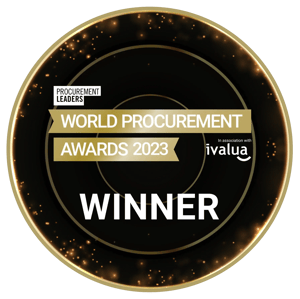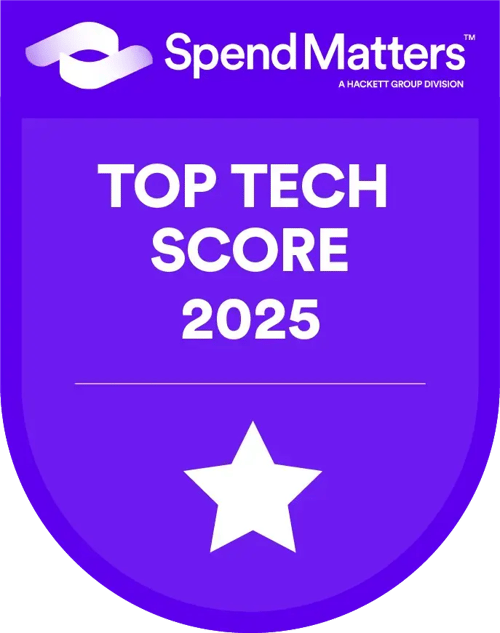2025 has started with procurement facing a perfect storm of change. The world is moving faster than ever.
Amidst geopolitical instability and increasingly complex supply chains, procurement's role has become critical to business success.
In this blog, we'll explore six hot topics in procurement that leaders must master to drive their organizations forward in 2025.
Applications of Agentic AI
The AI revolution has transitioned from headlines to practical applications in procurement operations.
As organizations move beyond pilot programs, Agentic AI is now seen as the next major leap forward in procurement technology.
Unlike traditional automation that follows predefined workflows, these sophisticated systems can make autonomous decisions within set parameters and learn from past interactions.
Agentic AI enables the execution of critical procurement tasks, including:
- Supplier identification and evaluation
- Bid analysis and selection
- Compliance monitoring
- Contract lifecycle management
This change could transform your procurement strategy from a reactive process to one automated in the right places.
How much does your current approach depend on manual effort? That’s where the difference would hit hardest. You’d be free to focus on the big picture while the AI handles the day-to-day workload.
Strategic Cost Savings
In 2025, the days of brute-force cost-cutting are behind us. Still, margin improvement remains a critical lever of corporate performance. Market conditions have only intensified this focus.
ERP systems, manual data processing, and inconsistent calculations give way to automation and validated savings capture.
This transformation's core is the shift to AI-powered spend classification and multi-source data integration.
But why is this a priority now? Companies that lag in this area risk losing competitiveness while rivals use AI to optimize every dollar.
Integrated data helps you prove responsible sourcing without breaking a sweat.
In your strategy, introduce AI tools to simplify procurement. This approach is less about cutting costs and more about spending smarter.
Risk Mitigation
The economic headwinds of 2024 have firmly anchored risk mitigation as a key procurement focus this year as well.
Considering inflationary pressures, procurement must improve its resilience against market fluctuations, supply shortages, and price volatility.
To build resilience, organizations are increasingly turning to data-driven solutions. For your strategy, it’s about three practical moves:
Economic turbulence, now with tariffs in the mix, isn’t slowing down.
The organizations that come out on top are the ones building resilience into their core, not patching holes as they go.
Strong Supplier Relationships
Continuing trade disputes necessitate stronger strategic partnerships between organizations and their key suppliers.
These partnerships serve as buffers against geopolitical uncertainties and trade restrictions.
Rather than treating suppliers as interchangeable vendors, it is time to develop partnerships that create mutual value.
These enhanced partnerships are yielding tangible benefits beyond traditional cost savings. Organizations report accelerated innovation cycles, improved supply chain resilience, and better access to strategic resources.
Audit your supplier network now. Strengthen the ties that matter most. Suppliers who see you as a partner are more likely to prioritize your orders when geopolitics throws a curveball.
Community Data
Community data has emerged as a powerful tool for navigating both economic and political challenges.
This new paradigm creates opportunities for procurement teams to make more informed decisions and identify market trends earlier.
Analyzing community data over time reveals trends and patterns among suppliers or industries that no individual company could access. Instead of just numbers, it hands you context.
Organizations are increasingly participating in community data to gain:
- Price development benchmarking
- Payment term recommendations
- Insights into supply chain disruptions
- Supplier discovery
Start small, but think big. Test it against a specific challenge, like benchmarking a key category. As you see the value, weave it into your long-term vision.
Preparing for CBAM
The EU's Carbon Border Adjustment Mechanism (CBAM) is no longer a distant concern for procurement.
The upcoming entry into effect requires thorough adaptation rather than reactive compliance.
This is especially relevant for procurement teams that handle steel, aluminum, cement, fertilizers, electricity, or hydrogen.
If you haven’t started, you must act quickly to prepare for the full implementation of CBAM in 2026.
Missing the deadline will result in higher costs, compliance penalties, and last-minute supplier disruptions.
To help you with a clear plan, read our CBAM compliance guide.
Looking Forward
While the speed of change may feel daunting, organizations can translate operational improvements into genuine competitive advantage.
This requires combining analytics and cost management, proactive risk mitigation, agile use of AI, and collaborative supplier relationships.
Procurement transcends departmental boundaries in this environment and contributes to long-term business resilience.
As your procurement analytics partner, Sievo can provide the tools and expertise you need to stay ahead.
Ready to see the results for yourself? Book a demo with us today.


